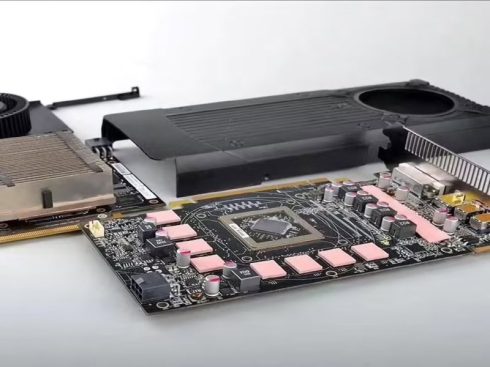A Thermal Pad also known as a “Thermally Conductive Pad” or “Thermal Interface Pad” is undoubtedly a reliable solution against rising temperatures. It ensures the prolonged lifespan of your electronic components, such as PCs, laptops, and consoles. But have you ever thought about choosing the best thermal pad thickness? How does it differentiate for differently sized components? How does it benefit the overall cooling performance.?

If not yet, here we have an ultimate guide for you to understand everything in detail. Unless you know the basic but important elements involved in a thermally conductive pad & its functionalities, the components you own may be at the risk of rising temps. So before it’s too late and the situation becomes alarming. Let’s move forward toward the in-depth detail of choosing and using quality thermal interface pads with their better measurement.
Thickness of Thermal Pad
Well, the primary objective behind the application of a thermal pad is to eliminate the gap in-between a heatsink & component. It results in better heat management as well as maintained pressure. So, how thin or thick should a pad be? It matters a lot because each component has a different compatibility. Where thinner thermal pads are best-fit for low-profile components & thicker are best-fit for high-profile components.
Although this term seems general, but choosing a thickness not compatible with the specification of a component may raise heating issues. Even you may end up losing your expensive components. So, one must be careful with the dimensions or thickness of thermal pads before application. Here are some of the recommended thickness parameters of thermal pads you can follow for different components.

[Note: The data about these ratios have been collected from reputable platforms]. Check them out,
Keep in mind that, the exact thickness of Thermal Pads depends upon the specific make/model of the component. It may carry some differences in comparison with the mentioned values.
– Thermal Pads Thickness for GPUs
The thickness of a thermally conductive pad for graphics cards varies from 1mm to 2mm sized pad.
– Thermal Pads Thickness for SSDs
The appropriate thickness of thermal pads for SSDs usually starts from 0.5mm to 1.75mm.
– Thermal Pads Thickness for Processors/CPUs
Here, commonly used values for the thickness of pads in processors/CPUs range from 0.5mm to 2mm.
– Thermal Pads Thickness for Laptop
According to sources/reputable platforms, the measurement of pads in a laptop starts from 0.5mm to 1.5mm.
– Thermal Pads Thickness for Consoles
Pads thickness for the consoles usually varies from 1.0mm to 1.5mm. (Consideration for Sony Playstations & Microsoft Xbox.)
– Thermal Pads Thickness for Mobiles
The appropriate thickness of the thermal pads for mobile devices or tablets is around 0.3mm to 1.0mm.
Types of Thermal Pads
Mentioned below are the types of thermal pads we usually see available.
– Silicone Thermal Pads:
You know what.? We can title the silicon pads as the most commonly used thermally conductive pads. They are made up of silicone material along with some metal oxides. Silicon pads have enough capability to transfer heat from components like the CPU to the heatsink efficiently. Moreover, the silicone pads are reliable, durable, safe to use, easy to apply, and produce less vibration.
– Ceramic Filled Thermal Pads
Another type of thermal pad here is a ceramic-filled pad. They are made up of a combination of ceramic particles like aluminium oxide & zinc oxide along with silicone material. Ceramic pads are considered reliable to use in components like CPUs, GPUs, and other electronic devices. If we talk about the features, ceramic-filled pads are also reliable, durable, and easy to use, cut, and apply.
– Graphite Thermal Pads
Graphite thermal pads are usually preferred for high-end systems or high-end devices. They are made up of naturally or artificially produced graphite material. One notable feature of graphite pads is their reusability, which means you can reuse graphite pads. Other than that, these pads are proven as a better heat-conductor along with durability, reliability, and easy-to-use mechanisms.
– Electrically Conductive Thermal Pads
Well, as compared to other pads, the electrically conductive pads are soft in nature. They manage both the heat and electricity in an organized manner. If we talk about their compatibility, they are best suitable for devices like circuit boards, LED displays, and EV (Electronic Vehicles) batteries. As we discussed earlier, these pads are compressible but still are good heat-conductive thermal pads.
– Non Silicone Thermal Pads
Although silicone thermal pads are often used pads in market, but you can prefer the non-silicone pads where there is no appropriate application of silicone ones. These pads are best compatible to use in devices like TV boxes, project boxes, and medical devices. Non-silicone pads also have the effective feature of managing the heat transfer in-between the component and heat sink.

Best Thermal Pad to Buy
Well, here comes into play the role of your diverse decision making capabilities. But in accordance with the specifications of your electronic components. Because choosing a quality thermal pad means increasing the lifespan of components in an efficient way.
Here are some of the popular brands mentioned below, which offer quality products as well as quality customer support. Check them out and choose the one for you fulfilling your requirements accordingly well.
– Jiujiu:
Over the last two decades, Jiujiu has held a strong grip in the tech market for manufacturing quality pads for high-end as well as low-end components.
– Thermal Grizzly:
Owns a reputable name in market for producing high-quality products for high-end devices.
– Arctic Cooling
Famous for its quality pads, high performance, reliability, and durability.
– Gelid Solutions
Offers quality pads along with easy methods of installation or application.
– Fujipoly
Well-known for Graphite Thermal Pads and better customer support.
– Cooler Master
Top ranked name in market, famous for quality pads as well as other computer related accessories.
How to Apply Thermal Pads.?
Check out this step-by-step guide in order to apply or install thermal pads effectively.
- Clean the surface of the component with a soft piece of cloth and a compatible liquid cleaner.
- Make sure to completely remove dust particles, and old pad/paste material (if any).
- Accurately measure the dimensions and thickness you need to go with.
- Cut the thermal pad according to the measured thickness with scissors.
- Place the thermal pad over the component, and remove its protective sheet.
- Finally, you have got 95% of the job done, assemble the components again, and check it for heat-test.
- If it’s up to the standard, then congratulations, you have completed 100% of the job successfully.
Wrapping Up
The fact is that It’s all about choosing the appropriate thickness of the thermal heating pad for the component you are using. It should not be too thick or too thin, the appropriate measurement ranges from 0.5mm to 1.5mm. Similarly, on the other end, it’s all about choosing the quality thermal pad. This effective combination can easily manage the temperature level of your components without any red signal.
If you are curious to know more about thermal interface pads. Keep visiting us and get tips, suggestions, and working solutions. We assure that you will end up choosing a quality thermal pad with an appropriate level of thickness.





